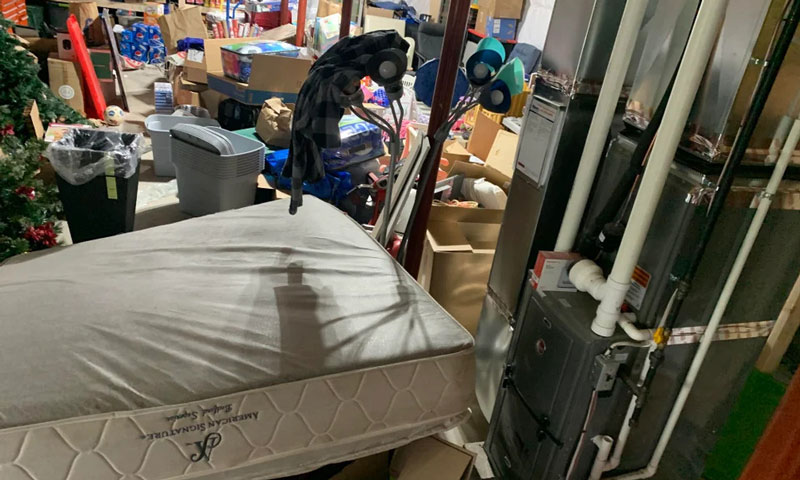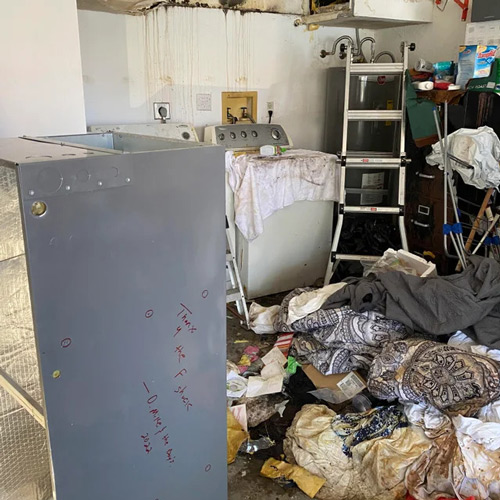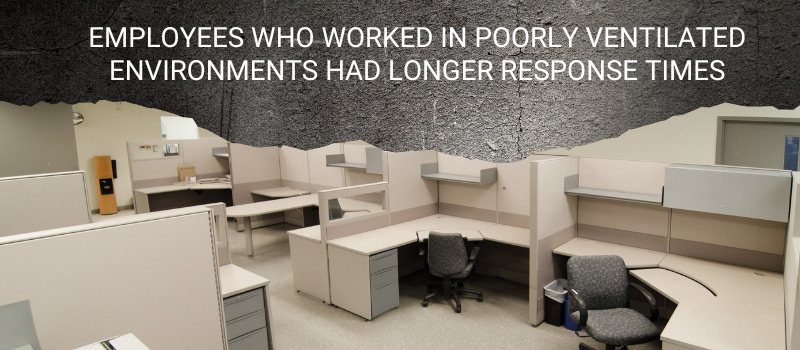Written by Industrial Stores Staff 09/04/2022

As HVAC technicians, we work in a variety of setups, from people’s residential properties, commercial buildings, and factories, to hotels, resorts, and airports.
Just as there’s really no limit to where you can be called out for maintenance or repair work, you can never guess the condition of your work space on a particular day. Today you may find a well-lit, organized, and spacious area, and tomorrow you may find a tiny dark room, full of clutter, and no space to work.
The latter may put you in some precarious positions that affect how you work and the equipment you work with.
Although there’s no way to guess what you’ll find out there, you can be prepared for the worst at any time. So, where should you start?
A conducive work space is essential to maximize your efficiency and satisfaction and eliminate some common hazards like electrocution, chemical exposure, and air poisoning. It also helps reduce the risks for clients and increase their satisfaction with your work.
Below are three of our least favorite work spaces of all time.

Have you been to a hoarder’s house?
These places are uninhabitable for you and me, but they’re very fertile breeding grounds for animals and insects of all manner. From rats to flies, roaches, snakes, and bed bugs, it’s not even surprising to find a raccoon hiding away in the piles of stuff that have taken over such homes.
Unfortunately, at least half of the work spaces you may be called to have some level of clutter. This is evidenced by the fact that at least 19 million Americans suffer from a hoarding disorder.
One downside of being called to work in cluttered and untidy spaces is that it may put you off at first sight. Just thinking of how to navigate the heaps of trash will dampen your mood and demotivate you, and moving trash to get to the equipment you’ve been called to fix will waste a lot of your precious time.
It doesn’t even end here. When the situation is really bad, you risk carrying some dirt, dust, and insects home with you. The dust and dirt aren’t difficult to get rid of; but roaches and bed bugs waste a lot of time and will cost you a lot of money if they infest your home, car, or office, and you’re required to fumigate.
Additionally, cluttered work spaces often harbor mold and mildew, which carry the risk of causing respiratory problems.
Other than that, you also have to be prepared to encounter slip and fall risks and unseen fire hazards.
It’s every HVAC technician’s prayer to be called to a completely safe and accessible space. But, by now, you know that this is not always the case.
Difficult access to an HVAC system can be frustrating for technicians as it wastes a lot of time and demands a lot of effort and special equipment.
Some of the common access problems you’ll encounter in the line of duty may include:
You need sufficient space that’s not blocked by trees and bushes, as well as large panels and doors to be able to reach the pipes and ductwork in the system. Access doors need to open against the air pressure and allow proper closure.
And let’s not forget how challenging and dangerous it is to access equipment placed on the roof. Servicing and maintaining equipment on the roof requires a ladder or temporary platform to be accessed safely, which poses a myriad of dangers.
Ladders are a known slip-and-fall hazard that’s amplified on windy and rainy days, while temporary platforms that are installed and taken down multiple times may be installed incorrectly or have a missing bolt or part.

Poorly ventilated spaces have minimal air movement, which leads to the accumulation of contaminated air and may expose you to respiratory and other health problems.
The Occupational Safety and Health Administration (OSHA) is the body that creates and enforces standards and regulations to ensure workers, especially those in the construction industry, are safe on the job. They have defined confined spaces for HVAC contractors as:
Some of the potentially hazardous conditions you’re exposed to while working in a confined and poorly ventilated space include:
Inhaling any of these toxic gasses or other substances may suffocate you and negatively affect your chemical and neurological processes. In the short term, you may suffer from shortness of breath, headaches, fatigue, drowsiness, dry throat, body aches, and unconsciousness.
It’s possible to avoid all these problems, but it’ll cost you a pretty penny. It’ll involve purchasing oxygen gauges, carbon monoxide detectors, cartridge masks, and self-contained breathing apparatus.

Creating healthy barriers in the contactor space is not easy, but it’s possible. The best place to start is by declining jobs that take you to unconducive and unsafe work spaces.
You don’t need to push yourself to work in an unhealthy environment because, in the end, you won't be able to complete your job efficiently, and can even push you into trade burnout.
What we may not have mentioned is that bad work spaces may also limit your motivation, productivity, and physical vitality. Fortunately, we have a solution: say ”no,” but politely. Here’s how:
Declining such tasks may not sit well with your clients, but it’ll save you a lot of time to perform other profitable tasks.
From the work spaces we’ve defined above, it’s clear that homeowners have a huge role to play in determining how well their HVAC installation, maintenance, or repair work opens up.
Here are some practical tips that you can share with clients before heading out for the job:
In most of the spaces, you’ll find the damage is far beyond what’s been quoted by the client. For instance, in a snake or rodent-infested home, you may be called to fix a blocked duct. Instead, you encounter cracks and holes in the systems that need to be sealed with HVAC tape or duct sealant, and chewed electrical wires that need to be replaced.
Industrial Stores can help you conduct repairs fast and efficiently by providing you with a huge catalog of HVAC spare parts and accessories. Our online store provides you with thousands of competitively priced products for an array of applications from top suppliers to save you time and money.
The table below features our best-selling categories that’ll make your installation, maintenance, and repairs seamless and effective.
Visit our online store today and browse the wide range of HVAC parts and accessories we have from leading manufacturers at competitive prices. We have a knowledgeable team ready and willing to assist you anytime and answer any questions you may have.
Give us a chance to prove ourselves as we’ve done with many others who came before you.
“Your staff was very pleasant, very quick to respond and I got the part sooner than expected. I installed it and the company is happy with the product.” - Frank Ocoee, FL
Share on Facebook: